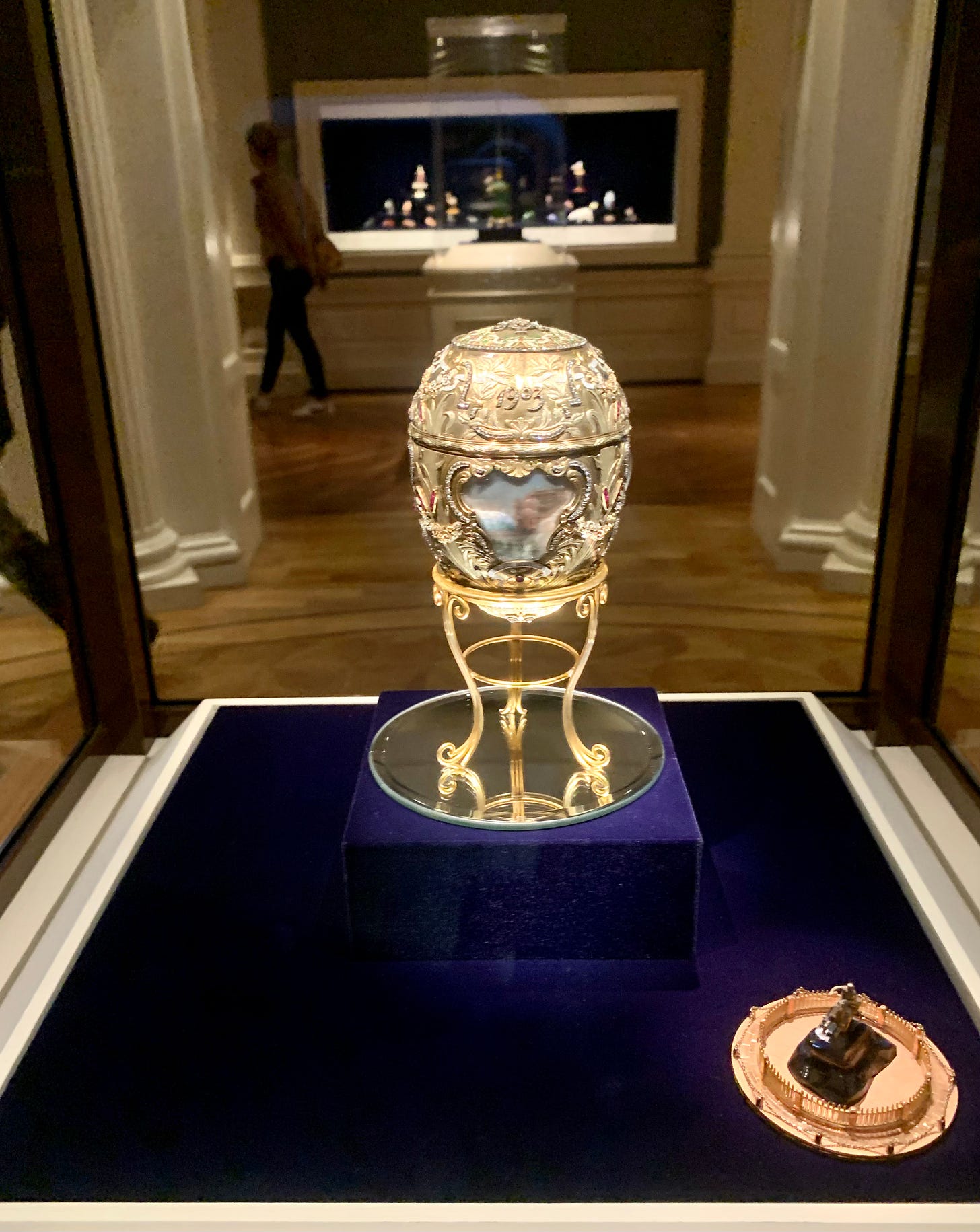Fabergé and Mrs. Pratt
The largest collection of Fabergé objects outside of Russia can be found in ... Richmond
If I had enough disposable income to collect fine art, I’d do what Lillian Thomas Pratt did. Because there is nothing more fabulous than Fabergé.
I viewed her collection with my own eyes last week while accompanying my dad on a trip to Richmond for a speaking engagement at The Tuckahoe Women’s Club. Just before we were about to leave, one of the lovely Tuckahoe ladies offered to take us to the Virginia Museum of Fine Arts, adding that it housed the largest collection of Fabergé objects outside of Russia. She had me at Fabergé.
Thanks to Mrs. Pratt, who donated her private collection to the museum in 1947, the “Fabergé and Russian Decorative Arts” permanent exhibit includes 280 objects by or attributed to the firm led by Karl Fabergé—including the Imperial Peter the Great Easter Egg and four other Russian imperial Easter eggs. The exhibit also features Old Russian-style works made by Feodor Rückert and other masters. Apparently the exhibit was on hiatus for a while, but returned this past fall.
I thought of the intricate Imperial Peter the Great Easter Egg while setting my Easter dinner table today. For the centerpiece, I placed a bowl with painted wooden eggs and a ceramic egg between vases of daffodils and Lenten roses. The ceramic egg opens to display an Easter Bunny that has, according to my daughter, “a very creepy smile.”
Meanwhile, the bejeweled Imperial Peter the Great Easter Egg opens to reveal a replica of Etienne-Maurice Falconet’s famous statue of Tsar Peter the Great rising out of the egg. A gift from Tsar Nicholas II in 1903 to his wife, Empress Alexandra Feodorovna, the 41⁄4-by-31⁄8-inch egg is made with red, green, and yellow gold, as well as platinum, and it’s festooned with rose-cut diamonds, rubies, rock crystal, and miniature watercolor portraits on ivory. An enameled wreath encircles Nicholas II's monogram.
These imperial eggs are so precious, when the museum staff has to clean a smudge on the inside of the glass boxes containing them, seven staff members must be present to witness the act.
If you’re like me, you might be wondering: Just who is Lillian Thomas Pratt and how did she get all of those fabulous Fabergé items? According to the museum, she was born in 1876 and married John Lee Pratt, a director and past vice president at General Motors who donated 250 shares of GM stock to the Virginia Museum of Fine Arts. Clearly, they both loved art and put their money where their mouths were, so to speak.
Mrs. Pratt purchased most of her Fabergé collection during the 1930s and 1940s from New York City’s Schaffer Collection and Hammer Galleries. The Virginia Museum of Fine Arts has her correspondences, invoices, price tags, and item descriptions. Her personal library—donated to the museum upon her death—sheds more light on her fascination with Russian history and is definitely worth checking out.
I think we southerners should take pride in having this rare and beautiful collection in our little corner of the country. Furthermore, it’s quite fitting that Mrs. Pratt’s collection all began with a fork. We do love to eat down here.
This renowned exhibit is worth seeing next time you’re in Richmond. A new website will help acquaint you with the fabulous Fabergé objects you’ll find there. And, of course, there’s an app.








Elegance in art and words. Thank you for sharing this breath-taking art.
What a wonderful treat to visit that museum. Your story and photos are beautiful.